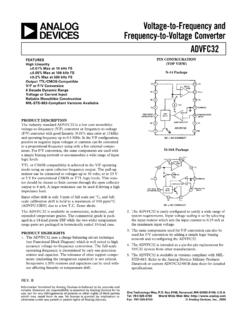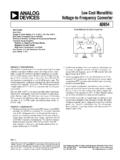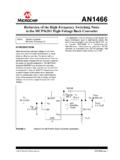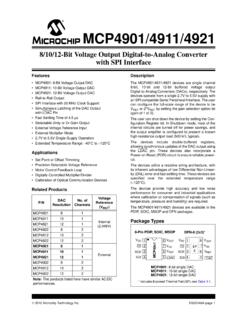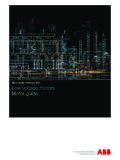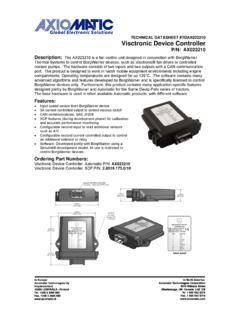Transcription of Saving Europe's Energy - UPS
1 CEMEP associates the main UPSmanufacturers in europe through the is the representative of themanufacturers of UPS towards the of CEMEP UPS GroupANIE/AMES, Italy, , Portugal, , Belgium, , Austria, , France, , United Kingdom, , Spain, , Finland,SVI, Sweden,ZVEI, Germany, of UPS Group11-17, rue Hamelin, F-75783 Paris CEDEX 16 Tel. + 33 1 45 05 70 70 - Fax : + 33 1 47 04 68 57 European Commission - JRC contacts :General Directorate for Energy Mr Paolo BERTOLDII-21020 Ispra (VA)Tel. : 39 0332 78 9299 (secretary 9145)Fax : 39 0332 78 9992E-Mail : Committeeof Manufacturersof Electrical Machinesand Power ElectronicsSaving Europe's EnergyThe main function of a UPS is to protect sensitiveloads (computers, servers, critical medicalequipment, automated processes, etc.) againstpower disturbances that can affect their operationor service life, often with serious types of disturbances can affect electricalpower during transmission or distribution including: lMajor voltage fluctuations (surges or dips)lFrequency variationslHarmonic distortion and transientslBrief or extended outagesFor this reason, UPSs are increasingly installed aspower-protection interfaces between the utilitypower point and sensitive choosing a UPS, it is important to takeoperating costs into costs are directly related to the electricalefficiency of the UPS under real document provides a basic review of efficiencyaspects to help users, installers and designers inchoosing an Energy -efficient UPS.
2 UPSEFFICIENCY95 %90 %85 %80 %Efficiency198019902000 IGBTsTHYRISTORSBIPOLARTRANSISTORS& MOSFETSE fficiency: the important parametersTo avoid unpleasant surprises (high operating costs,inadequate ventilation or air-conditioning), a number ofparameters must be considered when comparing UPStechnologies and topologies, each presenting certainadvantages but also very different different UPS topologies are defined in annexes Band D of CENELEC standard standby UPSs: the passive standby topologyoffers very high efficiency given that the load is supplieddirectly by the utility under normal operating conditionsand only transferred to the UPS in the event of a utilityoutage. However, such UPSs are classified as VFD (see EN62040-3 Annex D), meaning that there is noregulation of input voltage and frequency UPSs are generally reserved for applications that are not highly critical and for low power levels (1 to 3 kVA).
3 LLine interactive UPSs: the line interactive topologyalso offers high efficiency, but this can depend on inputvoltage and frequency UPSs are classed VI (see EN62040-3 Annex D)and do not provide frequency regulation. They are usedin environments not subject to heavy disturbances andfor low and medium power UPSs: given the continuousoperation of the AC/DC and DC/AC converters, thedouble-conversion topology offers less higherefficiencies when utility power is undisturbed, howeverthe efficiency is virtually independent of input voltageand frequency UPSs are classified as VFI and have power ratingsfrom 1 to 1000 kVA. They are considered to provideoptimum protection of sensitive equipment in : a key characteristic that is improving continuouslyThe choice of a UPS must take into account a numberof technical and economic aspects including:lthe types of disturbances that the load must beprotected required technical performance (voltage andfrequency regulation, reliability, size).
4 Lthe required operational over 25 years, electrical efficiency has been one ofthe characteristics that manufacturers have strived toimprove, in particular by developing new UPS topologiesand by using new power 15% increase in efficiency hasreduced losses by a factor of 4 !UPSEFFICIENCYnLoad levelA UPS is rarely used at full rated load, in particular ininstallations using redundant UPSs to provide continuousprotection even when one of the units fails or is beingserviced. The load is therefore generally lower than100% of the rated that certain losses are practically constant, theefficiency will decrease with load level. It is thereforeimportant to ask the UPS manufacturer for efficiencycurves at typical load levels, often 25 to 50% of the fullrated load. It is also important to avoid oversizing the UPS withnormal power not to far from the load level, as at low load the efficiency decreases.
5 An optimumefficiency curve should have the following shape: 25%50%75%100%91 %94 %94 %93,5 %EfficiencyLoadMeasuring UPS efficiencyEfficiencies given in commercial documents are oftenthe values measured at the full rated load (100% FLR) of the UPS, with a linear load and the nominal inputvoltage and efficiency is expressed as the ratio between theactive output power and the active input power, withoutany transfer of Energy to or from the battery ( battery fully charged). The measurement must be madewith appropriate instruments, in particular for non-linearloads. Standard EN62040-3 (part ) defines theequipment that should be measurements may be part of Type Testscarried out by the manufacturer for a certain productrange or Routine Tests carried out during on the actual conditions of use, thesemeasurements will be carried out for different cases:lLinear and non-linear loads (standardized)lLoad levels from 25% to 100%lDifferent input voltages and frequencies within theindicated toleranceslDifferent types of operationThese efficiency measurements can be used to calculatethe UPS losses under different operating values are very important and must not be under-estimated as they are often used to size theventilation and air conditioning of rooms housingmedium and high power under-estimation will increase electrical consumptionbut could also have catastrophic consequences on thereliability and availability of the power-protection the right UPSC hoose the technology best suited to the need,environment, application and required availability : lVFI : Voltage and Frequency Independent lVI : Voltage Independent lVFD.
6 Voltage and Frequency DependentOnce the type of UPS has been defined, compare thecharacteristics guaranteed by the manufacturer,possibly based on tests carried out by an independentlaboratory under real operating achieve the required performance level, choose theUPS presenting under real operating conditions both thelowest operating cost and highest efficiency. Today, manufacturers belonging to theEuropean Committee of Manufacturers ofElectrical Machines and Power Electronics(CEMEP) are making continuous progress in the protection of the environmentthrough product design, operating energysavings and end-of-life of loadThe loads supplied by UPSs may have very differentcharacteristics. The loads are seldom linear (perfect sinewave) and non-linear loads have a non-sinusoidal current with a highharmonic content. This is particularly the case for computer hardware andmedical and industrial is therefore essential to know the actual efficiency ofa UPS when supplying this type of load, as certainconverter technologies are very sensitive to technologies can be compared using thereference non-linear load defined in annex E of voltage variationsThe efficiency is often given for a nominal utility voltageof 230 or 400 V.
7 Once again, continuous operation at adifferent voltage level, for instance 210 V or 370 V, canalter the UPS efficiency. This point should always be checked with themanufacturer.

